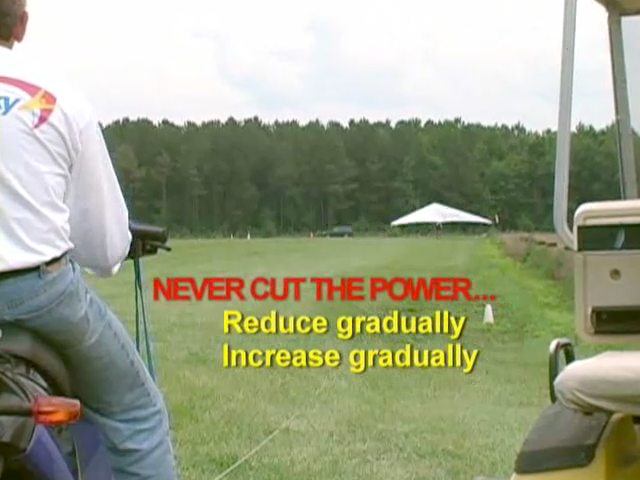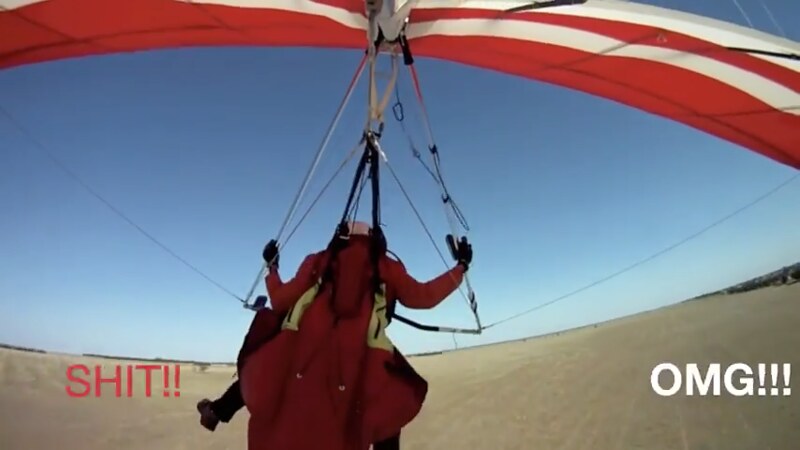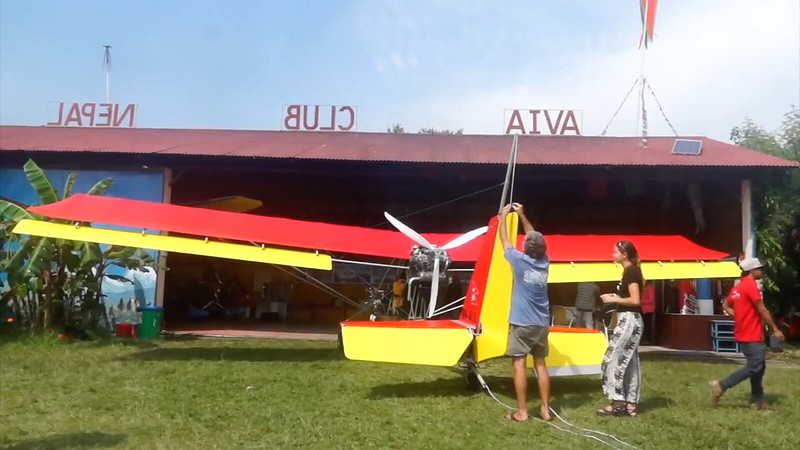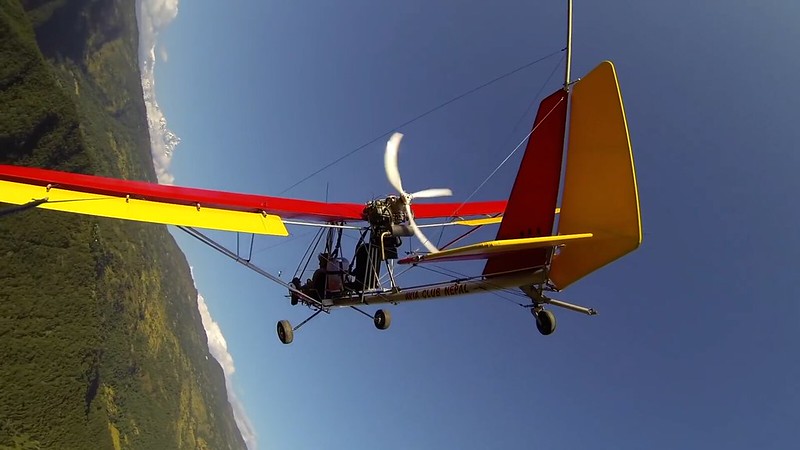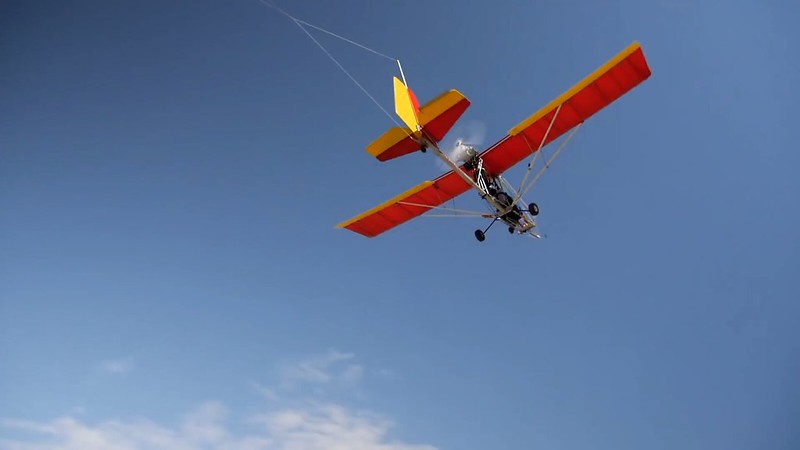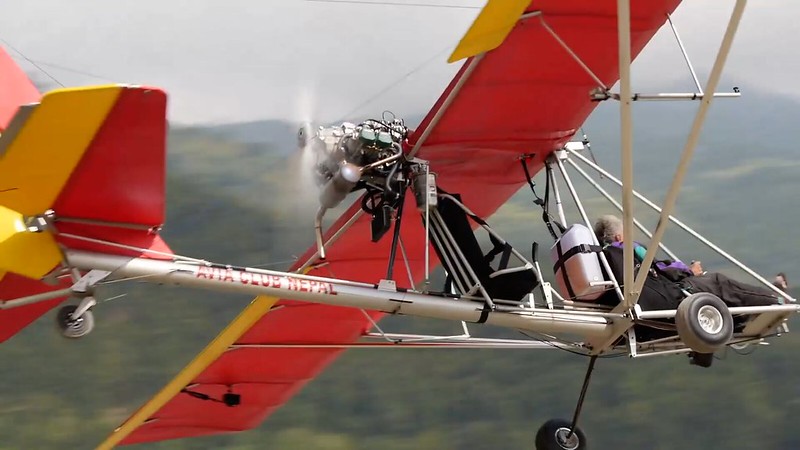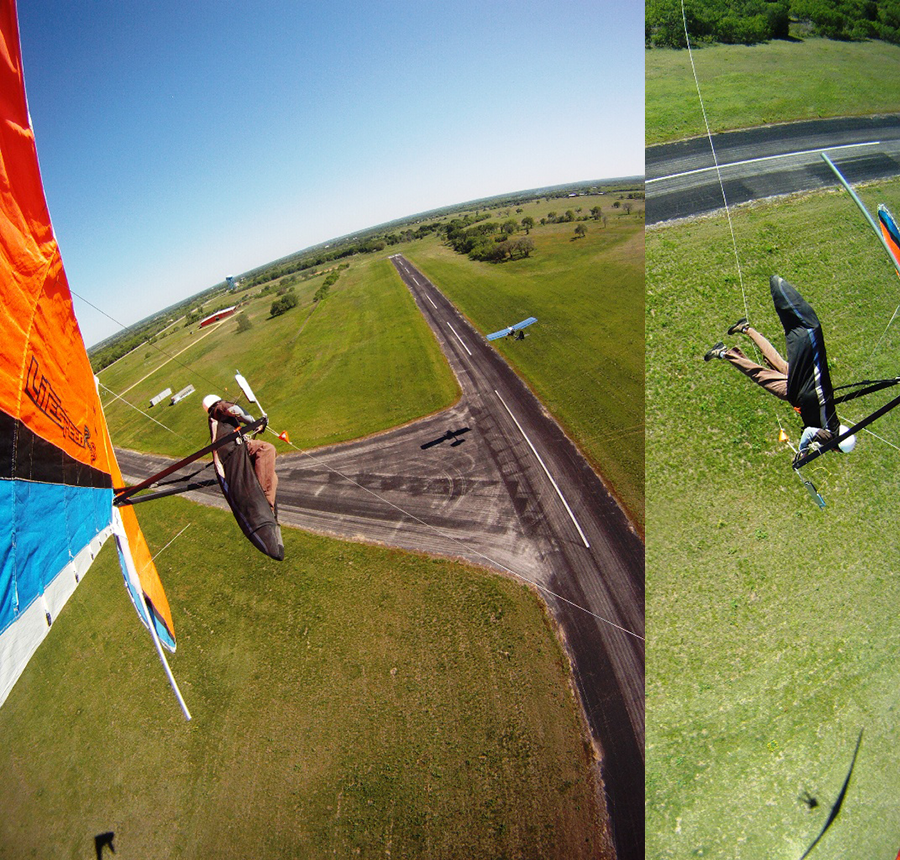http://ozreport.com/forum/viewtopic.php?t=24534
It's a wrap
Lauren Tjaden - 2011/08/01 02:01:06 UTC
Lauren here. In general, the weak link on the glider end will break before the one on the plane. However, my glider's main weak link was wrapped in a huge bunch around the 'biner, therefore it did not break. I also had a secondary weak link on my shoulder (which does not take as much force), but the plane's link broke first. Really, it was just half a second (or less) until the break, and the backups worked as they should.
I just thought it was very interesting the way the line wrapped and thought it was a good reminder for all pilots who aerotow to keep their weak links short.
Also, a tandem weak link is doubled, due to the much greater tow forces on it due to its much greater weight. Technically the tow plane's weak link will break sooner than the tandem's will. Of course what happens in reality is not exactly what happens in principle -- though it WAS what happened in this case.
Had the plane's weak link not broken, I would have been left towing from my shoulders, which would have been okay. I could have released from my barrel release on my shoulders or Paul could have given me the rope. Had all else failed, I could have used my hook knife.
For whomever asked about the function of a weak link, it is to release the glider and plane from each other when the tow forces become greater than desirable -- whether that is due to a lockout or a malfunction of equipment or whatever. This can save a glider, a tow pilot, or more often, a hang glider pilot who does not get off of tow when he or she gets too far out of whack.
I rarely break weak links -- in fact, I believe the last one was some two years ago, and I have never broken one on a tandem (probably because I am light and also because I change them whenever they show any signs of wear). They are a good thing to have, though!!
Lauren here. In general...
In general? What the fuck does that mean?
...the weak link on the glider end will break before the one on the plane.
They're BOTH PLANES - you idiot. The one on the front is called the TUG. The one on the back is the GLIDER. (But I suppose you could swap that around without too much trouble - seeing as how our towlines transmit pressure.)
However, my glider's main weak link was wrapped in a huge bunch around the 'biner, therefore it did not break.
- Translation...




We're too fucking incompetent to configure the focal point of our safe towing system - after, quite literally, hundreds of thousand of tows - such that it actually does what it's supposed to.
- Bullshit.
http://www.chgpa.org/forums/viewtopic.php?f=2&t=3600
Weak link question
Jim Rooney - 2008/11/24 18:54:27 UTC
I'm confused. I never said the tug's ass was endangered. That's why we use 3strand at the tug's end. Using 4 strand can rip things off (it's happened). When forces are achieved that do break a 3 strand, your tail gets yanked around very hard, which does have implications as to the flight characteristics and flightpath. AKA, I have no desire to allow you to have the ability to have that effect on me when I tow you... esp near the ground.
It wouldn't have broken anyway. Seventh post into the thread:
Paul Tjaden - 2011/07/30 15:33:54 UTC
Quest Air has been involved in perfecting aerotowing for nearly 20 years and I can say that the steel ring, polished or not, has a greater tendency to wrap than the small aluminum carabiners. There are other obvious reasons a heavy steel ring is not a great idea swinging around at the end of a 250 foot line.
On the chest line we normally run a double weak link on one end just as we do with the primary. This is probably not the optimum situation and can and does lead to the weak link on the Dragonfly tow bridle breaking before that one will break. Having the rope is not a big problem if you have altitude but can be an issue down low. Although it is easy to get rid of with the chest barrel release, perhaps we will reduce the strength of the chest weak link to one loop. It's always a balancing act. It's no fun having an inadvertent low weak link break when you are low so we don't want this weak link too weak.
That's Paul saying they're using three strand up front without actually saying they're using three strand up front. And let's look at the history of this bullshit...
http://ozreport.com/5.126
Flytec Dragonfly
USAFlytec - 2001/07/14
Steve Kroop - Russell Brown - Bob Lane - Jim Prahl - Campbell Bowen
The tail section of the Dragonfly is designed so that it can accept in-line as well as lateral loads. Furthermore the mast extension, which is part of the tow system, is designed to break away in the event of excessive in-line or lateral loads. The force required to cause a breakaway is roughly equivalent to the force required to break the double weaklink used on the tail bridle. More simply put, the mast would break away long before any structural damage to the aircraft would occur.
Un fucking believable.
The force required to cause a breakaway is roughly equivalent to the force required to break the double weaklink used on the tail bridle.
"ROUGHLY" "EQUIVALENT". Not even just a bit stronger. Sometimes the seven and a half cent double loop of precision Dacron fishing line blows first, other times it's the $250 tow mast that increases the safety of the tandem towing operation. The important things are that the tandem is no longer trying to make more of this crappy argument that being on tow is somehow safer than being off tow and there's no structural damage to the front end aircraft. (One might believe the tow mast would be considered part of the structure of the aircraft...
Jim Rooney - 2008/11/24 18:54:27 UTC
I'm confused. I never said the tug's ass was endangered. That's why we use 3strand at the tug's end. Using 4 strand can rip things off (it's happened).
...but one would be wrong.)
Here's the very first public acknowledgement that the accepted standards and practices with respect to the front end have suddenly changed:
http://www.chgpa.org/forums/viewtopic.php?f=2&t=3600
Weak link question
Brian Vant-Hull - 2008/11/13 19:18:04 UTC
BTW, a highly experienced source who wishes to stay anonymous (call him "Deepfloat") because he doesn't want to get entangled in the name calling (we're all tired of it), has a very interesting point to make.
Deepfloat says the reason 3 strings are used on the tug end instead of 4 is because experience has shown that a 4 strand breaking strength causes damage to equipment, the tug being a far more complex mechanism than a glider. Using a 4 strand weaklink on a glider as advocated for heavier pilots effectively means you don't have a weaklink and will end up with the rope.
Highly experienced source who wishes to stay anonymous Deepfloat is very obviously a very thinly disguised Jim Keen-Intellect Rooney. He hasn't been able to engage me directly since:
http://www.chgpa.org/forums/viewtopic.php?f=2&t=3035
Tad's Barrel Release and maybe an alternative
Jim Rooney - 2008/02/25 02:59:11 UTC
Tad thinks a bit too highly of himself and generally detests everyone else.
But yeah, no argument on the asshole part.
I'm a pretty easy going guy and he irritates me to no end.
(which is why I now block his posts)
'cause he knows I'll continue to kick his fuckin' ass if he does.
2002/08/17 a Dragonfly tow mast increases the safety of the towing operation at Fort Langley, British Columbia and the tandem instructor and his student - William Allen Woloshyniuk and Victor Douglas Cox respectively - were both killed instantly at the bottom of a thousand foot inconvenience stall. 2005/09/03 Arlan Birkett and Jeremiah Thompson are both killed when the focal point of a non Dragonfly tug's safe towing system blows. Not to mention 1996/07/25 Bill Bennett and Mike Del Signore.
These motherfuckers KNOW they've launched a BIG PROBLEM for themselves with this piece o' shit Dragonfly / Rotax powered flying weak link. If they fix the problem they really open themselves up to a lot of negligent homicide charges. The safer (il)legal strategy:
http://ozreport.com/forum/viewtopic.php?t=31052
Poll on weaklinks
Jim Rooney - 2013/03/05 01:32:20 UTC
Btw, it's nothing to do with you "counting" on the weaklink breaking... Its about me not trusting you to hit the release.
If it were only about what you want, then you could use what you like.
You want the strongest weaklink you can have.
I want you to have the weakest one practical.. I don't care how much it inconveniences you.
I don't trust you as a rule. You Trust you , but I don't and shouldn't.
Keep making the weak links even safer. Also...
Dr. Trisa Tilletti - 2012/06
We could get into details of lab testing weak links and bridles, but this article is already getting long. That would be a good topic for an article in the future. Besides, with our backgrounds in formal research, you and I both know that lab tests may produce results with good internal validity, but are often weak in regard to external validity--meaning lab conditions cannot completely include all the factors and variability that exists in the big, real world.
http://ozreport.com/forum/viewtopic.php?t=31052
Poll on weaklinks
Davis Straub - 2013/03/06 18:29:05 UTC
You know, after all this discussion I'm now convinced that it is a very good idea to treat the weaklink as a release, that that is exactly what we do when we have a weaklink on one side of a pro tow bridle. That that is exactly what has happened to me in a number of situations and that the whole business about a weaklink only for the glider not breaking isn't really the case nor a good idea for hang gliding.
I'm happy to have a relatively weak weaklink, and have never had a serious problem with the Greenspot 130, just an inconvenience now and then.
I'm thinking about doing a bit more testing as there seemed to be some disagreement around here about what the average breaking strength of a loop of Greenspot (or orange) weaklink was.
Make sure that valid figures for actual weak link strengths are never recognized and accepted.
Another issue... When a Dragonfly loses the instructor and student due to the success of the breakaway towmast and lands with the jagged stub projecting up towards where most of it used to be it very clearly reveals the Dragonfly to be the dangerously underbuilt piece o' crap that it actually is. When it comes back minus the towline it looks a lot more like everything worked smoothly - exactly as it was carefully designed to. Student got too low on the tug, started overwhelming its control, weak link did exactly what it was supposed to, a third of the personnel and half the planes (the WAY more expensive plane) returned to base unscathed. (And two potential witnesses for the prosecution are permanently silenced.)
http://ozreport.com/forum/viewtopic.php?t=865
Tandem pilot and passenger death
Mike Van Kuiken - 2005/10/13 19:47:26 UTC
The weak link broke from the tow plane side. The towline was found underneath the wreck, and attached to the glider by the weaklink. The glider basically fell on the towline.
Very sad - but could've been a lot worse.
The Flight Park Mafia did NOT want it publicized that they'd dumbed down the front end weak link by what they assumed would be 25 percent. Likewise they wouldn't have wanted it publicized that they'd beefed up the front end if they'd decided to something moderately decent for something completely new and different. But Jim Keen-Intellect Rooney wouldn't take the hints and keep his stupid fuckin' mouth shut 'cause...
http://www.chgpa.org/forums/viewtopic.php?f=2&t=3600
Weak link question
Jim Rooney - 2008/11/24 23:38:01 UTC
It's not "uncharted territory"... you're just not aware of what's been done. Just as you weren't aware of the reason for 3 strand links on the tug.
...he couldn't resist impressing everyone with his intelligence and the depth and breadth of his AT expertise.
Go back and find one other insider asshole making noise about the three-strander and/or timing of the switch.
Go through the 35 posts of this thread and find any references regarding strength or number of strands with respect to the three weak links involved in this one beyond:
Lauren Tjaden - 2011/08/01 02:01:06 UTC
Also, a tandem weak link is doubled, due to the much greater tow forces on it due to its much greater weight.
which we already knew anyway from the photo:

in her/the first post.
Watch how carefully Paul dodges the issue:
Paul Tjaden - 2011/07/30 15:33:54 UTC
On the chest line we normally run a double weak link on one end just as we do with the primary. This is probably not the optimum situation and can and does lead to the weak link on the Dragonfly tow bridle breaking before that one will break.
Whatsamatta Paul? Can't count to three? And this is the better part of three years after Rooney's shot his stupid mouth off.
http://www.chgpa.org/forums/viewtopic.php?f=2&t=3600
Weak link question
Lauren Tjaden - 2008/11/20 22:50:53 UTC
Tad gave Paul a couple of HIS links while we were at the ECCs this year. Paul used them happily ( without any situation that might cause a problem) until one day at Zapata in rough air while he was attempting to adjust his VG. Paul locked out badly and the link didn't break. The double weak-link attached to the tug plane BROKE because the forces were so extreme. Russell quoted afterward that he'd never had his tail pulled around so violently. Luckily, Paul's glider was not stressed to the point of failure, and Paul was able to drop the rope and landed safely.
The date on that was 2008/07/20. So IF that was indeed a four strander we know that they'd snuck in the threes subsequent to that date and almost undoubtedly well prior to the end of Ridgley’s season in October. A three month window.
And now that I think about it... If I were Russell...
http://ozreport.com/forum/viewtopic.php?t=24846
Is this a joke ?
Jim Rooney - 2011/08/26 17:34:33 UTC
See, Russel knows what's up.
He knows that you're changing the equation and because of this, you need to ask the tug pilot.
...and thus too much of a sleazebag to do the job right and beef up the tow mast I'd have gone three strand the next flight to keep from trashing that $250 (non)structural component. (They allowed Paul to go up with the Tad-O-Link. They've undoubtedly also got doubles (similar strengths) going up solo.)
I also had a secondary weak link on my shoulder...
- Why? In case your cheap shit primary bridle wraps at the tow ring? The way, for all intents and purposes, yours just did?
- So why don't you have secondary weak links on BOTH shoulders? Oh yeah...
http://www.hanggliding.org/viewtopic.php?t=27393
Pro towing: 1 barrel release + weak link or 2 barrel release
Juan Saa - 2012/10/18 01:19:49 UTC
The normal braking force in pounds for a weak link is around 180, at least that is the regular weak link line used at most aerotow operations. By adding a second weak link to your bridal you are cutting the load on each link by half, meaning that the weak link will not break at the intended 180 pounds but it will need about 360.
If that is what you use and is what your instructor approved then I have no business on interfering, i dont know if you are using the same weak link material but there shoul be only ONE weak link on a tow bridle for it to be effective in breaking before higher loads are put into you and the glider should the glider gets to an attitude or off track so much that the safety fuse of the link is needed to break you free from the tug.
I made the same mistake on putting two weak links thinking that I was adding protection to my setup and I was corrected by two instructors on separate occacions at Quest Air and at the Florida RIdge.
Forget I asked.
...(which does not take as much force)...
- Pressure - pounds per square inch.
- How much pressure does it take? It's the same fuckin' idiot double loop of 130 pound Greenspot isn't it?
http://www.chgpa.org/forums/viewtopic.php?f=2&t=3107
I have a tandem rating!!!
Lauren Tjaden - 2008/03/23 22:20:15 UTC
When Jim got me locked out to the right, I couldn't keep the pitch of the glider with one hand for more than a second (the pressure was a zillion pounds, more or less), but the F'ing release slid around when I tried to hit it. The barrel release wouldn't work because we had too much pressure on it.
Sounds to me like it takes plenty of pressure - even when it's only seeing a bit over a quarter towline at well under primary weak link.
...but the plane's link broke first.
No shit.
Really, it was just half a second (or less) until the break...
After which you and your victim got handed just 250 feet of Spectra towline. And funny we're not hearing anything about how violently Paul got his tail pulled around. Maybe 'cause that issue has a shitload more to do with how far out of line the glider is than how strong any weak link is?
...and the backups worked as they should.
No they didn't.
- First off... The only reason the "backups" came into play at all was due to massive incompetence, negligence, stupidity.
- The tug end blew. That's not a backup. That's the tug's ONLY weak link.
Towing Aloft - 1998/01
I witnessed a tug pilot descend low over trees. His towline hit the trees and caught. His weak link broke but the bridle whipped around the towline and held it fast. The pilot was saved by the fact that the towline broke!
If you fuckin' douchebags had anything in the way of brains you'd have THE weak link at the front end of the towline and it would be impossible to blow it with the glider on the back end. Read the fuckin' FAA regulations you're always bending over backwards to ignore and violate.
- MY secondary weak link would've blown 'cause it's only twenty percent heavier than the top end and it's instantly gonna be seeing nearly twice the load plus the shock factor. (And that's always been way out of the league of you assholes.)
I just thought it was very interesting the way the line wrapped...
I'll bet you did. "OOH!!! Look at that! Who'da ever thunk!"
...and thought it was a good reminder for all pilots who aerotow to keep their weak links short.
A RE minder? Tell me when any of you fuckin' dickheads...
http://www.chgpa.org/forums/viewtopic.php?f=2&t=3107
I have a tandem rating!!!
Lauren Tjaden - 2008/03/23 22:20:15 UTC
...have ever MINDED any "pilots" to keep their weak links short? Show me a single photo of an Industry Standard weak link...
29-030127

...that's less than five times the length that it should be. Something that ISN'T a product of...
http://www.flickr.com/photos/aerotowrelease/8306296899/

...Tad's Hole In The Ground.
Also, a tandem weak link is doubled, due to the much greater tow forces on it due to its much greater weight.
And make sure not to use any actual numbers to back up whatever you feel like pulling outta your ass. The tug doesn't get more powerful when it's pulling up a tandem. I'm gonna say it's about the same base tension - 155 pounds steady with the 914 turbo boosted - but a slower climb rate due to the extra weight and drag. But you're gonna get higher surges due to issues of drag and inertia.
Technically the tow plane's weak link will break sooner than the tandem's will.
Technically and illegally - since the people who run these things are all total incompetent fucking douchebags.
Of course what happens in reality is not exactly what happens in principle...
http://ozreport.com/forum/viewtopic.php?t=24846
Is this a joke ?
Jim Rooney - 2011/08/26 06:04:23 UTC
As my friend likes to say... "Sure, it works in
reality... but does it work in
theory?"
Hahahahhaa... I like that one a lot

...though it WAS what happened in this case.
Pseudointellectual lipstick on a pig.
Had the plane's weak link not broken, I would have been left towing from my shoulders, which would have been okay.
Yeah, what's the worst that could happen...
http://4.bp.blogspot.com/-bRrpHNa68iY/UQ6Pv9gRZyI/AAAAAAAAjTg/Hc22bx5122Q/s2048/20943781_BG1.jpg

...towing from your shoulders? And a heavy passenger along for the ride?
I could have released from my barrel release on my shoulders...
http://www.chgpa.org/forums/viewtopic.php?f=2&t=3107
I have a tandem rating!!!
Lauren Tjaden - 2008/03/23 22:20:15 UTC
The barrel release wouldn't work because we had too much pressure on it.
And that's with a little more than half the pressure on it.
...or Paul could have given me the rope.
And fixed whatever was going on back there.
Had all else failed, I could have used my hook knife.
Ain't it nice to discover all your idiot malfunctions at two and a half thousand feet in smooth air.
For whomever asked...
Ridgerodent - AKA Steve Davy. Too much fuckin' trouble to go back to 2011/07/31 16:49:09 UTC and find out?
...about the function of a weak link, it is to...
http://ozreport.com/forum/viewtopic.php?t=24846
Is this a joke ?
Jim Rooney - 2011/08/26 02:44:10 UTC
The "purpose" of a weaklink is to increase the safety of the towing operation. PERIOD.
...increase the safety of the towing operation - PERIOD.
...release the glider and plane from each other when the tow forces become greater than desirable...
- Greater than DESIRABLE? I can't imagine ANY tow force...
http://www.chgpa.org/forums/viewtopic.php?f=2&t=2467
weak links
Jim Rooney - 2007/08/01 19:49:30 UTC
It's more of this crappy argument that being on tow is somehow safer than being off tow.
...being desirable. Sounds to me like you're making more of this crappy argument that being on tow is somehow safer than being off tow. And you guys are always towing us with 914s.
http://ozreport.com/forum/viewtopic.php?t=9230
Departing the launch cart
Jim Rooney - 2007/09/01 02:39:53 UTC
Which brings us to the reason to have a 914 in the first place... you need one.
Something made you get a 914 instead of a 582. 914s are horribly expensive to own and maintain. If you own one, you need it... it's a safety thing. Short runways, tall trees, whatever. You've got a 914 to increase your safety margin.
Wouldn't the 582s be so much safer? Not to mention cheaper?
- So what's stopping someone from using a RELEASE to RELEASE the glider and plane from each other when the tow forces become greater than desirable? You've got two alleged pilots and two alleged releases available for task - ferchrisake.
- Nobody EVER releases from a tow when the tow forces become greater than desirable. We desire all the tow forces we can get...
10-03323
http://farm3.staticflickr.com/2928/14397296584_1d0e5e389b_o.png
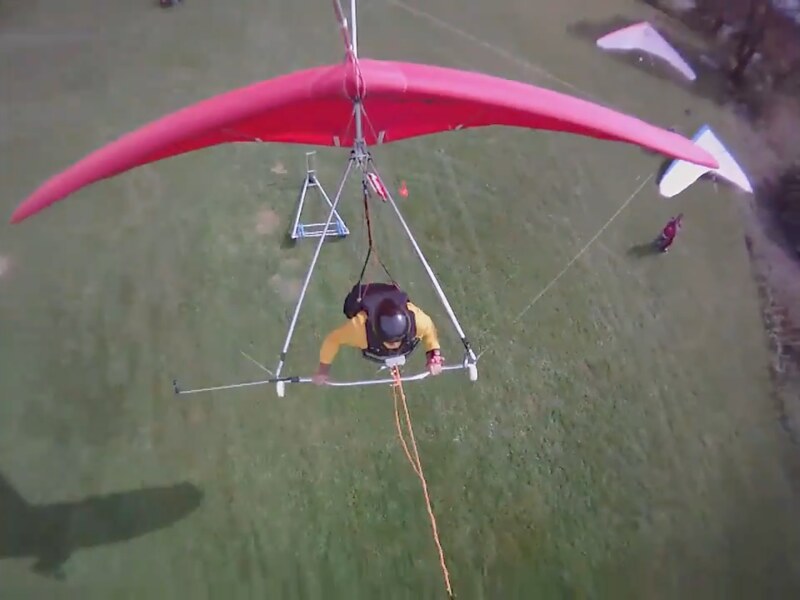
...'specially in aero. That would be like bailing from a thermal 'cause the lift's too strong and you're going up too fast. We release ONLY when we're locking or locked out. And that virtually never happens down in the kill zone to a competent two pointer. And there's no such thing as a competent one pointer.
- Furthermore... The tension tends not to increase all that fuckin' much during the period at which the lockout is progressing to the lethal point.
37-1505
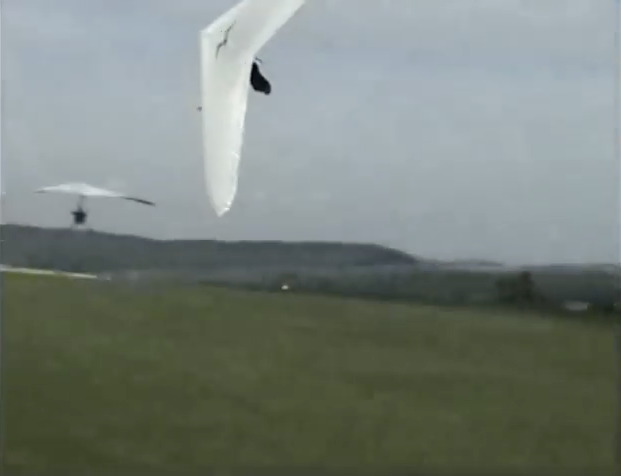
40-1512

50-1623
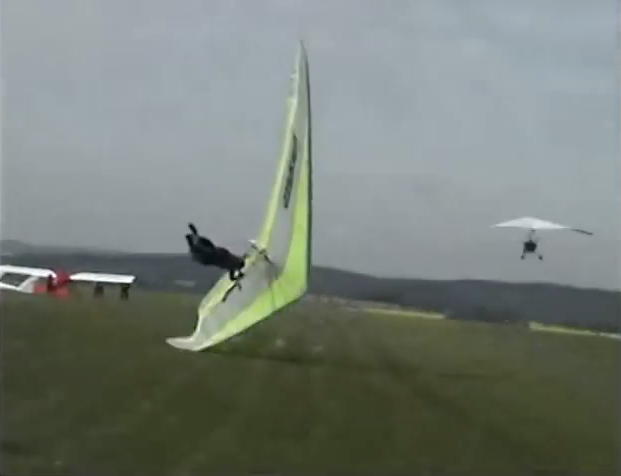
55-1712
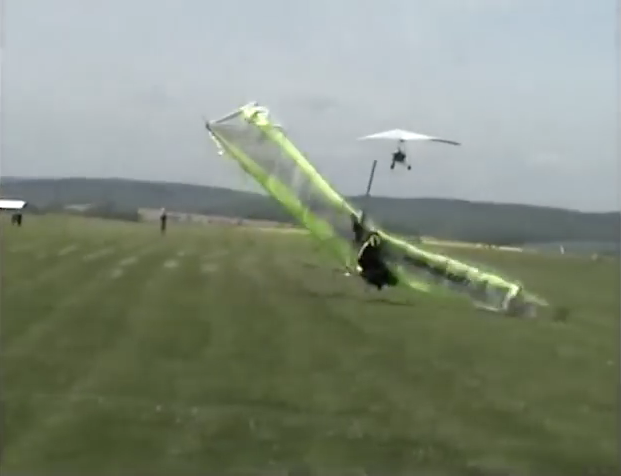
That's why weak links are virtually one hundred percent USELESS as lockout protectors. Up high they make awesome instant hands free releases. Down where they're keeping score you're absolutely FUCKED.
...whether that is due to a lockout...
Way up high you're not gonna hit the ground either before or for a while after the focal point of your safe towing system increases the safety of the towing operation. See above. (Also notice just how severely the trike was affected by that one.)
...or a malfunction of equipment or whatever.
- Sorry Lauren, I don't DO malfunctions of equipment or whatever. I've read too many fatality reports in which the Infallible Weak Link didn't do shit to compensate for malfunctions of equipment or whatever. And assholes who go up with total crap Industry Standard equipment or whatever get exactly what they deserve.
- Would a weak link that broke at the worst possible time, when the glider was climbing hard in a near stall situation...
Donnell Hewett - 1980/12
Now I've heard the argument that "Weak links always break at the worst possible time, when the glider is climbing hard in a near stall situation"...
...count as an equipment malfunction? And if so, what's your Plan B gonna be?
This can save a glider, a tow pilot, or more often, a hang glider pilot who does not get off of tow when he or she gets too far out of whack.
Really?
Had the plane's weak link not broken, I would have been left towing from my shoulders, which would have been okay. I could have released from my barrel release on my shoulders or Paul could have given me the rope. Had all else failed, I could have used my hook knife.
- Which part of that is supposed to be beyond the capabilities of us mere muppets? (And we all know that we can use our razor-sharp cutting tools to slash through our lines in an instant.)
- Cite a single instance from the entire history of hang glider aerotowing in which a hook knife has ever had any effect other than producing a little extra weight and drag.
- We have an account from you of running a lockout emergency drill with only a little over a quarter towline tension going to your cheap shit bent pin barrel backup release and you found it totally inoperable (which may have been what kept you and your check ride pilot from getting your stupid asses killed. What would you be doing different in this prospective emergency situation? The same thing with twice the loading and expecting better results?
- At Quest within under five years of you writing this two professional pilots are gonna not get off tow when they get too far out of whack. Neither of their Quest tug drivers - Mark Frutiger and April Mackin - are gonna release them. No hook knives came out. Both of their Appropriate / Industry Standard Weak Links increase the safety of the towing operations precisely when they were supposed to. Both of them stalled. Zack was dead on arrival and Jeff was dead upon impact.
Lauren Tjaden - 2013/02/03
Yesterday at Quest we lost our good friend, Zach Marzec, in a hang gliding accident. We are all in shock and heartbroken here and are all pulling together to support his girlfriend, Clara.
Any thoughts? (Just kidding.}
I rarely break weak links...
Rarely. But hell, it's a pretty big deal to have your life saved even just rarely.
in fact, I believe the last one was some two years ago...
Sounds like your number's about to come up again. If I were you I'd dumb them down about five or ten percent.
...and I have never broken one on a tandem (probably because I am light and also because I change them whenever they show any signs of wear).
Doesn't sound like a very safe strategy to me. I'm way the hell safer than you are on a Standard Aerotow Weak Link. Have you thought about 115 pound Greenspot? No, wait...
http://ozreport.com/forum/viewtopic.php?t=31052
Poll on weaklinks
Jim Rooney - 2013/03/04 19:31:36 UTC
We all play by the same rules, or we don't play.
Once again, it's the women who get discriminated against. Some things just never change - 'specially in these testosterone poisoned male dominated sports.
And...
...because I am light...
Yeah?
Also, a tandem weak link is doubled, due to the much greater tow forces on it due to its much greater weight.
So how 'bout you - instead of Mitch - and li'l Nathan Cox?
7-14522
http://c2.staticflickr.com/6/5517/14036301121_17849a6a04_o.png
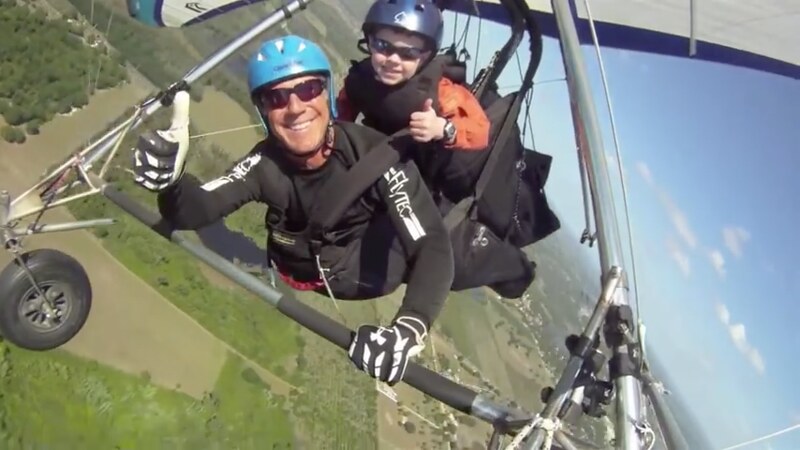
Minimum flying weight for a Falcon 3 Tandem is 256 pounds. I fly at 320 on my HPAT 158. So what does that do to your appropriate lockout protector calculations?
They are a good thing to have, though!!
And they're handed out for free at the flight line! Can't get much more bang for the buck than that anywhere! The last snake oil I purchased was eighty bucks an ounce.
Thanks bigtime for the gold mine, Lauren. How's tricks with you and Paul nowadays?













